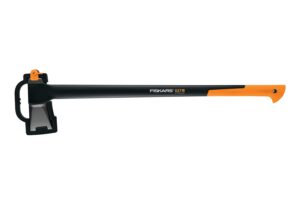Installing a ceiling fan is one of the most effective ways to improve airflow and comfort in your home. Whether you’re replacing a light fixture or upgrading your space with a new fan, one crucial component often overlooked is the ceiling fan mounting box. This small but essential part ensures the fan is securely and safely attached to your ceiling.
In this guide, we’ll walk through why a proper mounting box matters, how to choose the right one, and tips for installation.
Why a Ceiling Fan Mounting Box Is Important
A ceiling fan can weigh anywhere from 10 to 50 pounds and often rotates at high speeds. Unlike light fixtures, which are usually light and stationary, fans place stress on the ceiling structure. That’s where a ceiling fan mounting box comes in.
Standard electrical boxes are not designed to handle this weight and movement. A mounting box, especially one with a brace or steel support, ensures the fan stays in place, even after years of use. It reduces the risk of the fan wobbling, falling, or damaging your ceiling.
Choosing the Right Ceiling Fan Mounting Box
There are various types of fan boxes available, and picking the right one depends on your ceiling structure:
-
Brace-mounted fan boxes: Ideal for ceilings where the joists are not easily accessible. These boxes come with extendable metal arms that can be installed through a small ceiling hole.
-
Joist-mounted fan boxes: Best when you have open access to ceiling joists (like in new construction or attic installations).
-
Pancake boxes: Thin and shallow, used where ceiling depth is limited—but must be rated for ceiling fans.
When shopping for a ceiling fan mounting box, look for products made of durable materials like galvanized steel and UL-listed for fan support. Many hardware stores offer high-quality models designed to carry loads up to 70 pounds, providing peace of mind for homeowners.
Installation Tips
If you’re handy with tools and familiar with basic electrical work, you may be able to install the mounting box yourself. Here are some tips to ensure safe and effective installation:
-
Turn Off Power: Always switch off the power at the breaker before beginning any electrical work.
-
Remove the Existing Fixture and Box: If you’re replacing a light fixture, remove it along with the old electrical box, which is usually not rated for fan use.
-
Install the New Fan Box: Whether it’s a brace or joist-mounted box, follow the manufacturer’s instructions closely. Use screws and hardware included to secure it tightly.
-
Double Check the Load Rating: Make sure the box can handle your ceiling fan’s weight. Overloading could result in damage over time.
-
Wire the Fan Properly: Connect the wiring according to both fan and box instructions. Secure all connections with wire nuts and electrical tape.
-
Mount the Fan: Attach the fan bracket to the box, hang the fan motor, and install the blades. Ensure everything is balanced and secure.
If you’re unsure at any step, hiring a licensed electrician is always the safest route.
When to Replace a Ceiling Fan Mounting Box
If your current fan is wobbling, noisy, or visibly loose, it may be time to inspect the mounting box. Over time, older boxes can wear out or come loose due to vibration. Replacing it with a reinforced, modern ceiling fan mounting box is an easy upgrade that improves both safety and comfort.
Frequently Asked Questions (FAQs)
Q1: What is a ceiling fan mounting box?
A: A ceiling fan mounting box is a specially designed electrical box that supports the weight and motion of a ceiling fan. Unlike standard electrical boxes, it is reinforced to handle the dynamic forces of a rotating fan.
Q2: Can I use a regular electrical box to install a ceiling fan?
A: No. Regular electrical boxes are not rated for ceiling fan use. Installing a fan on a non-fan-rated box can lead to the fan becoming unstable, falling, or damaging your ceiling over time.
Q3: How do I know if my ceiling box is rated for a fan?
A: Look for labels inside the box stating it’s rated for ceiling fan support. Fan-rated boxes are often made of metal or heavy-duty plastic and will include load ratings, usually 50–70 lbs or more.
Q4: Do I need to replace the mounting box when replacing a light with a ceiling fan?
A: Yes. If the current box was used for a light fixture, it’s likely not strong enough to support a fan. You should replace it with a ceiling fan mounting box before installing the fan.
Q5: What types of ceiling fan mounting boxes are available?
A: There are several types, including brace-mounted, joist-mounted, and pancake fan boxes. The right one depends on your ceiling access, joist spacing, and fan weight.
Q6: Can I install a ceiling fan mounting box myself?
A: If you’re experienced with electrical work and have the right tools, you can install it yourself. However, for safety and code compliance, it’s recommended to hire a licensed electrician if you’re unsure.
Q7: What is the weight capacity of a ceiling fan box?
A: Most ceiling fan-rated boxes can support between 50 to 70 pounds. Always check the specifications on the box to match your fan’s weight.
Q8: Is it safe to install a ceiling fan without a fan-rated box?
A: No, it is not safe. Ceiling fans can vibrate and cause standard boxes to loosen, which poses a risk of falling. Always use a fan-rated box for safety.
Q9: Can I install a ceiling fan mounting box in an existing ceiling without attic access?
A: Yes. Brace-mounted boxes are designed for retrofitting between joists through a small ceiling hole, making them ideal for finished ceilings with no attic access.
Q10: How much does a ceiling fan mounting box cost?
A: Prices vary depending on material and features but typically range from $10 to $30. It’s a small investment for long-term safety and performance.
Final Thoughts
A ceiling fan is a practical upgrade that adds style and function to any room. But don’t underestimate the importance of a reliable ceiling fan mounting box. It’s the foundation that ensures your fan stays quiet, stable, and safe for years to come.
Whether you’re taking on a DIY project or hiring a pro, choosing the right materials—especially a secure fan-rated mounting box—is key to a successful installation



